A bit of a twist on the Refuge’s Hack Tower
http://www.friendsofcamas.org/live-video
If you followed our Falcon webcam last year you may remember that early in the season the male falcon disappeared. And in his place, a first-year male appeared, probably the previous year’s sole 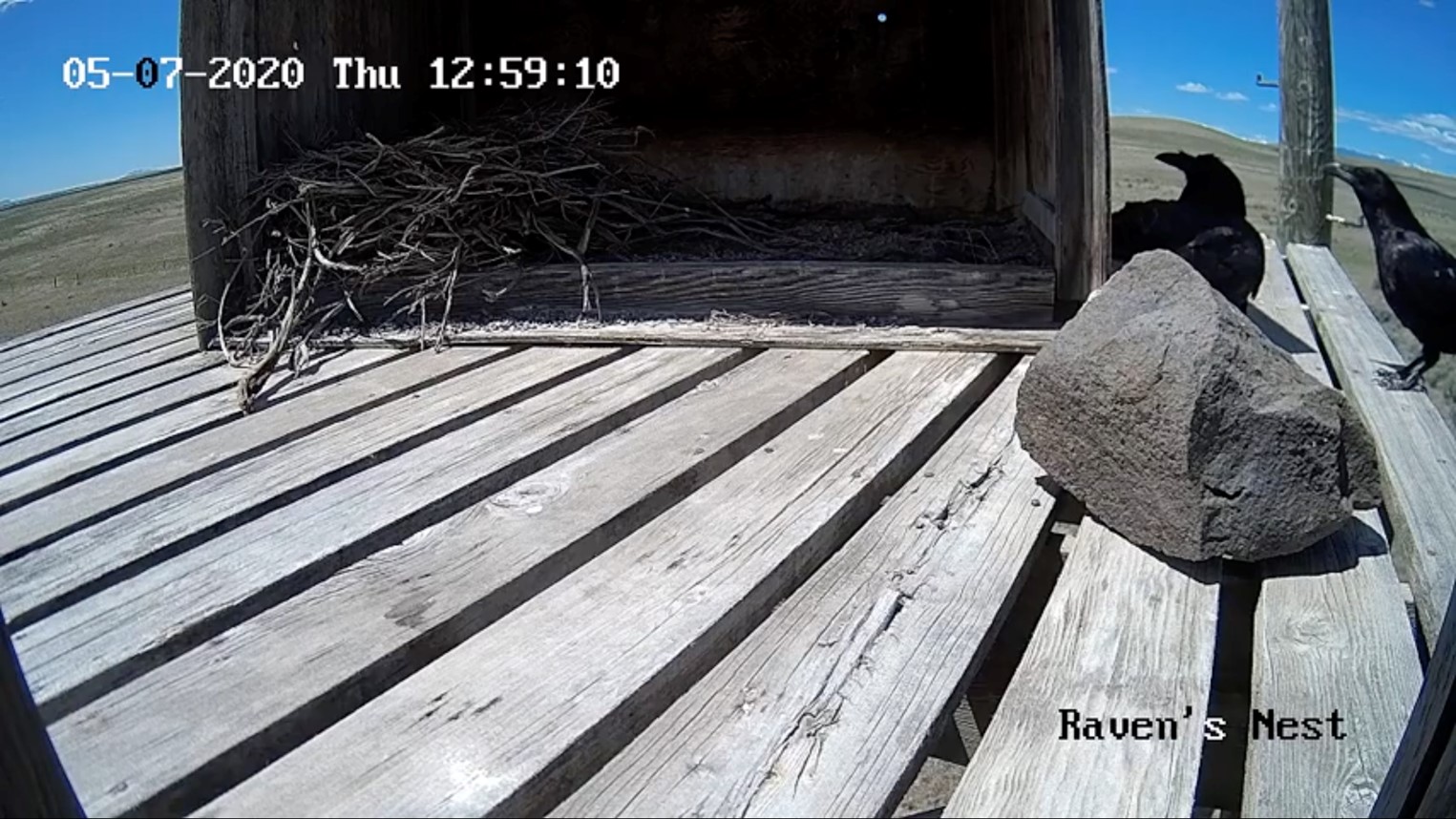 fledgling. The female falcon wanted nothing to do with him and drove him off repeatedly. But he kept coming back. Before long the female left for good. The youngster hung around for a few more weeks, and then before midsummer, he too disappeared. It is questionable that falcons will return.
fledgling. The female falcon wanted nothing to do with him and drove him off repeatedly. But he kept coming back. Before long the female left for good. The youngster hung around for a few more weeks, and then before midsummer, he too disappeared. It is questionable that falcons will return.
Ravens seemed to know this, and early this year they took up residence on the tower. We considered disrupting the ravens nesting attempt. But unlike falcons, ravens would be difficult to dislodge. And our access to the tower has been limited due to the Coronavirus scare. So we left them alone. And we left the camera running. Eggs should begin hatching in early June. The action is live on YouTube, the stream named, “2020 Camas NWR Tower”.
The Future
The Camas Tower was built in the early 1980s and falcon chicks hatched in captivity were placed there to reintroduce peregrine falcons to the wild. It is likely that at least one of the many falcons that have returned ever since has been a direct descendent of one of those chicks. If that chain is broken, we don’t know if wildland falcons would be interested in such a manmade structure.
We’ll try again next year.
Meanwhile, check out the ravens. You can learn from them. Webcam link:
The webcam is currently experiencing technical issues, please check back later.
Back from the Brink!
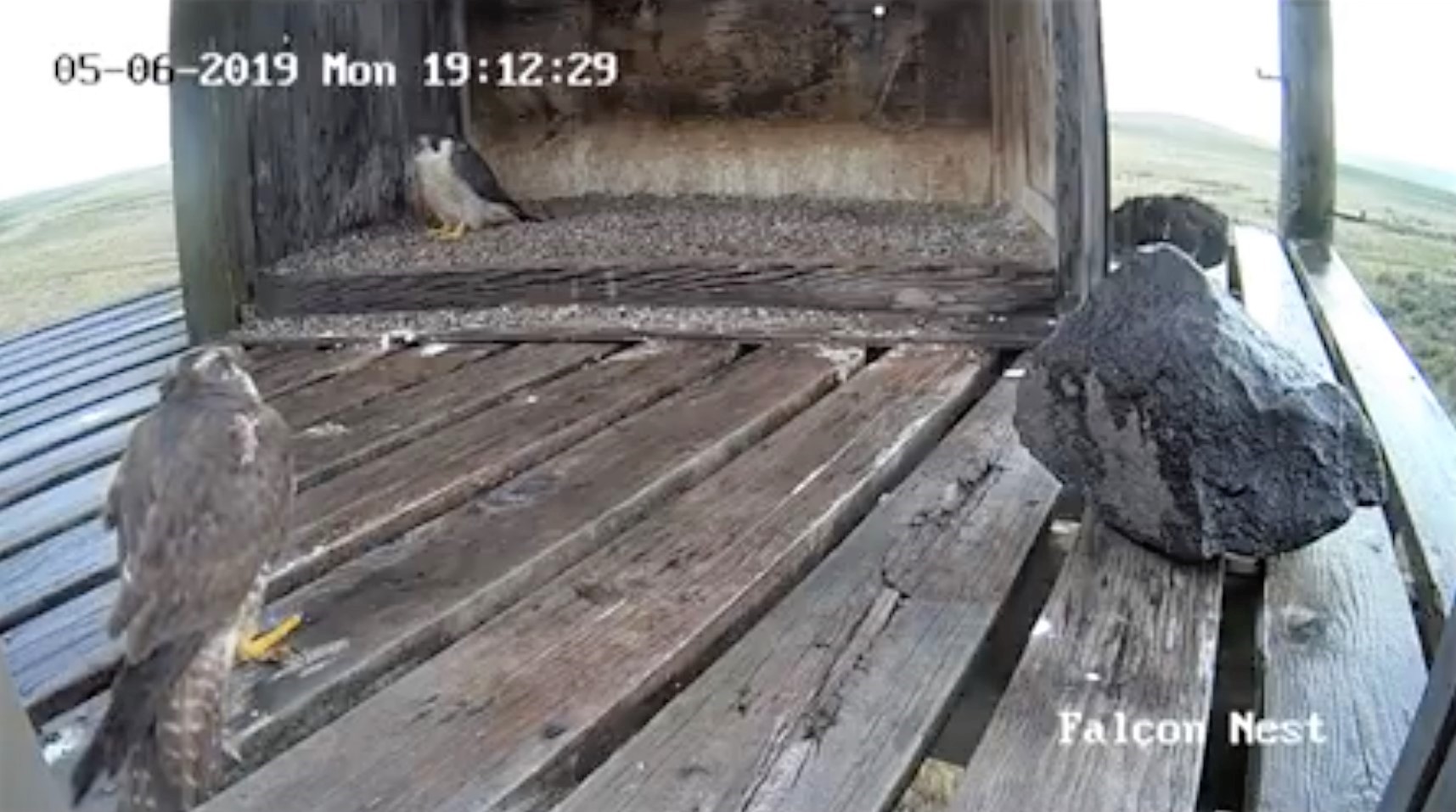 Less than 40 years ago the Peregrine Falcon was in danger of disappearing from the lower 48 states. Thanks to efforts here in Idaho, particularly the Peregrine Fund at the World Center for Birds of Prey in Boise, these dynamic hunters are back. For nearly three decades wild peregrines have successfully produced young at Camas National Wildlife Refuge on a manmade nesting tower located in an area closed to the public.
Less than 40 years ago the Peregrine Falcon was in danger of disappearing from the lower 48 states. Thanks to efforts here in Idaho, particularly the Peregrine Fund at the World Center for Birds of Prey in Boise, these dynamic hunters are back. For nearly three decades wild peregrines have successfully produced young at Camas National Wildlife Refuge on a manmade nesting tower located in an area closed to the public.
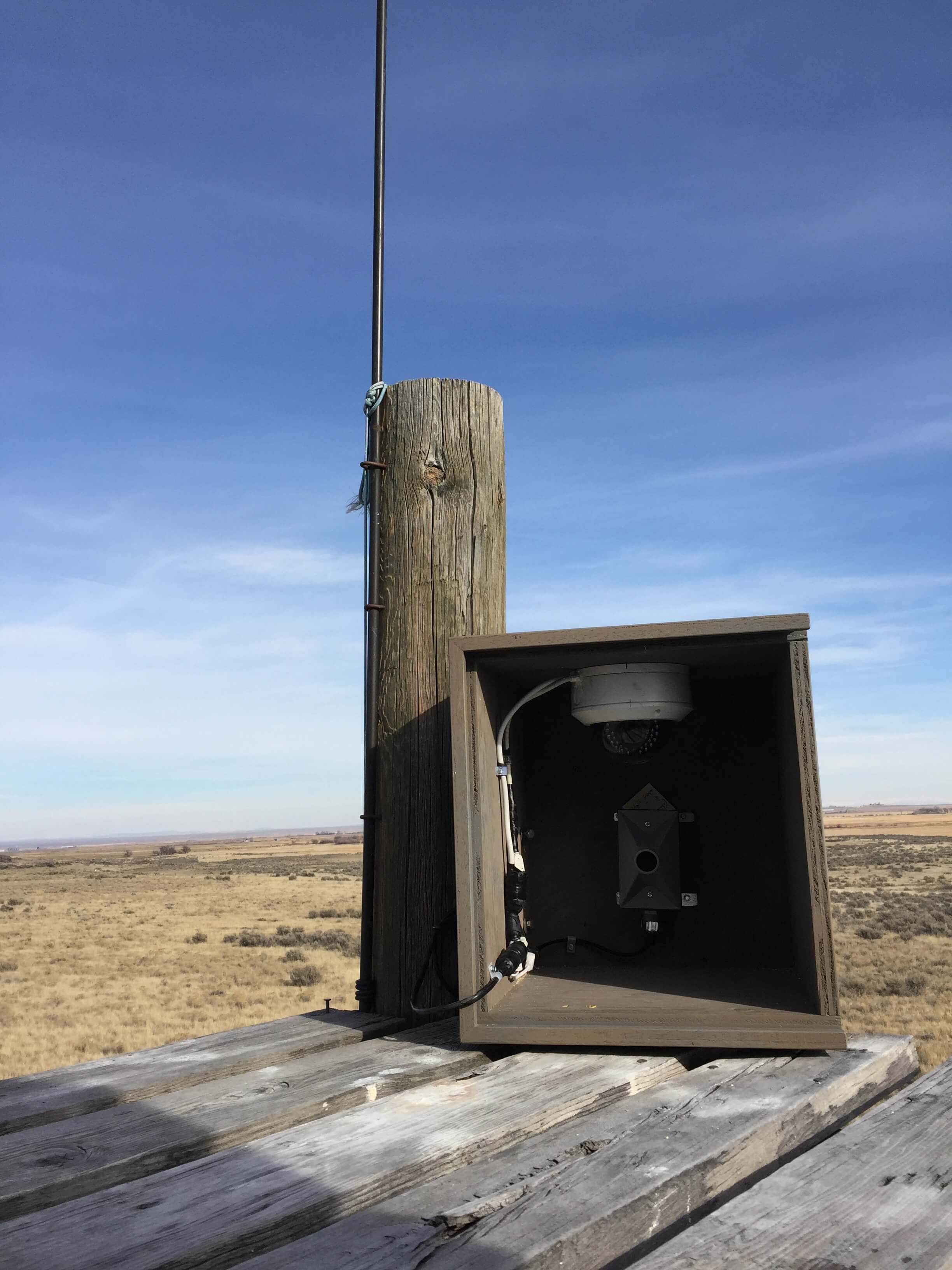 Over the winter of 2016/17 the Friends of Camas NWR installed a webcam on the nest platform with a view into the falcon nest. The camera was updated in November 2018 and included the installation of a microphone.
Over the winter of 2016/17 the Friends of Camas NWR installed a webcam on the nest platform with a view into the falcon nest. The camera was updated in November 2018 and included the installation of a microphone.
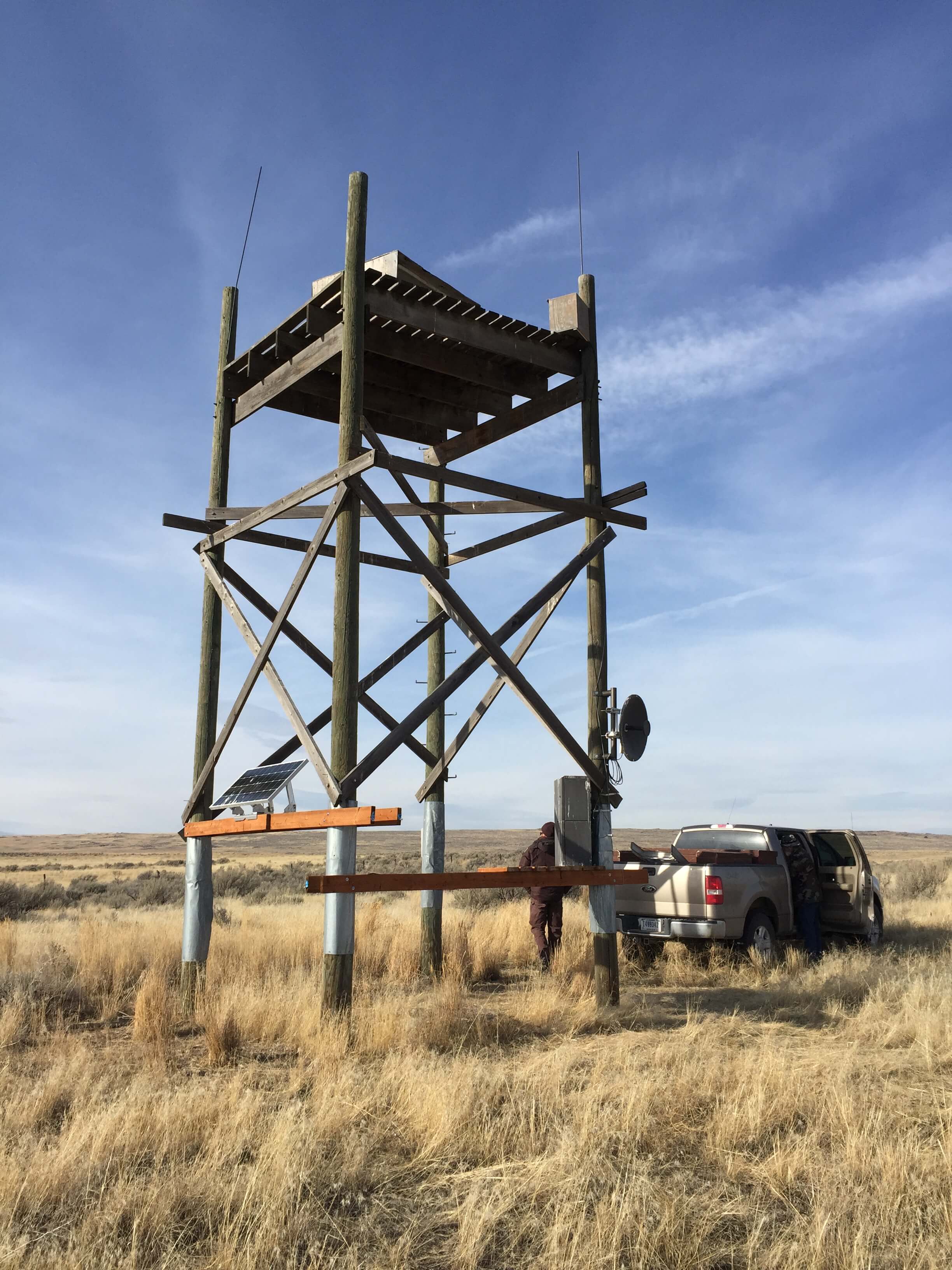 In the spring of 2017, a peregrine couple established themselves on the tower and undertook nesting. It is likely that at least one of these pairs was a direct descendent of the captive-bred birds that were placed on the tower 40 years ago. In 2017 the birds seemed to be on track for nestlings, but none appeared. It was probably the same pair of falcons that returned in 2018 and produced a single fluffy chick which grew its flight feathers and flew the nest in early September. This year, the (presumably same) pair returned and went through all the same rituals of reproduction. But again the nest failed. Notably, after the pair had established themselves and seemed to be on the verge of laying, a first-year male peregrine appeared, and the mature male (called a “tercel” in falconry language) vanished. The hen (properly called the “falcon”) persisted in her broody behavior. But she seemed to give up. May 16 she flew off and has not been seen since. The young male was last seen on June 8.
In the spring of 2017, a peregrine couple established themselves on the tower and undertook nesting. It is likely that at least one of these pairs was a direct descendent of the captive-bred birds that were placed on the tower 40 years ago. In 2017 the birds seemed to be on track for nestlings, but none appeared. It was probably the same pair of falcons that returned in 2018 and produced a single fluffy chick which grew its flight feathers and flew the nest in early September. This year, the (presumably same) pair returned and went through all the same rituals of reproduction. But again the nest failed. Notably, after the pair had established themselves and seemed to be on the verge of laying, a first-year male peregrine appeared, and the mature male (called a “tercel” in falconry language) vanished. The hen (properly called the “falcon”) persisted in her broody behavior. But she seemed to give up. May 16 she flew off and has not been seen since. The young male was last seen on June 8.
We do not know why our falcons are having such difficulties. Much of bird behavior is instinctive, and reproduction results by fallowing a series of ritual-like steps. Any deviation may break the chain. Our activities monitoring the nest are done carefully not to be disruptive. No one goes near the tower during the nesting season. The camera is silent and does not emit any light. The birds clearly know it is there and seem to accept it as part of their environment. They often use it as a perch. Before winter sets in and after the falcons have gone south, we will visit the tower for inspection and winterizing. The camera will be on again early in March 2020.
Fundraising Websites - Crowdrise
Where
The nest tower is about 2 miles from Headquarters and it is not hard to see if one knows where to look. It is located in an area that is normally off-limits to visitors.
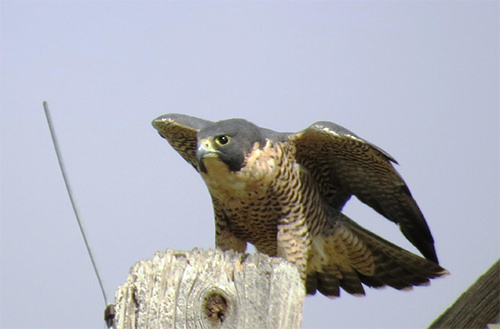
Photo Credit: Steve Butterworth
Why
A primary mission of the Friends of Camas is to bring public awareness to the educational resources available on the Refuge. Anyone who visits the refuge that is interested in wildlife can witness first hand the marvel of migration that sweeps through with the changing seasons. The peregrine (whose name means “wandering”) follows this tide, spring and fall, and spends the summer here to raise its young. It is iconic for migration. It is gone in winter. Other times it is rare, wary, and fleet. The friends of camas would like to make this falcon visible via a webcam to the public.
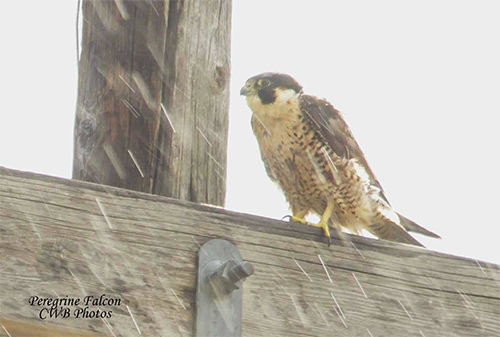
How
In the fall of 2016 Friends of Camas installed a solar-powered “bullet” security camera. The camera was mounted pointing into the nest-box from the side of the northeast pole of the tower. The signal is radio transmitted to a server at Headquarters. The server formats the signal for streaming and transmits it via Mud Lake Telephone to the video streaming service YouTube. During the nesting season look for a live link on this page and on our Home page to see what the camera sees. At the end of the 2018 nesting season, the original camera was replaced with a dome-type security camera that can be zoomed in or out by the system administrator. The materials cost of this activity to date is around $8,000, all provided from donations to the Friends of Camas. All labor for installation, maintenance, and operation has also been provided by the Friends.
Friends of Camas Projects